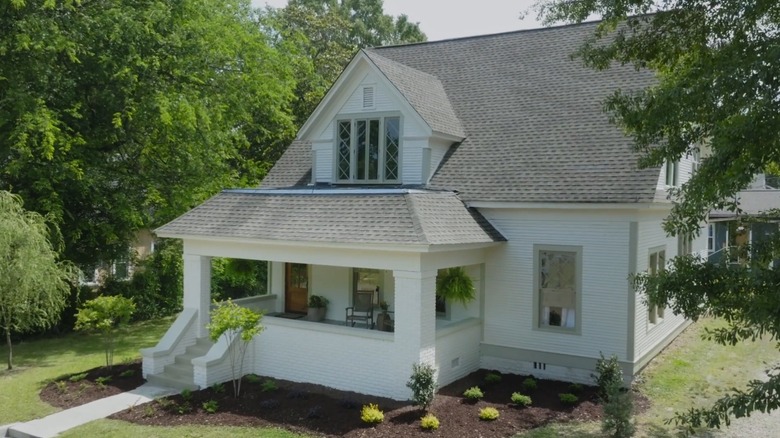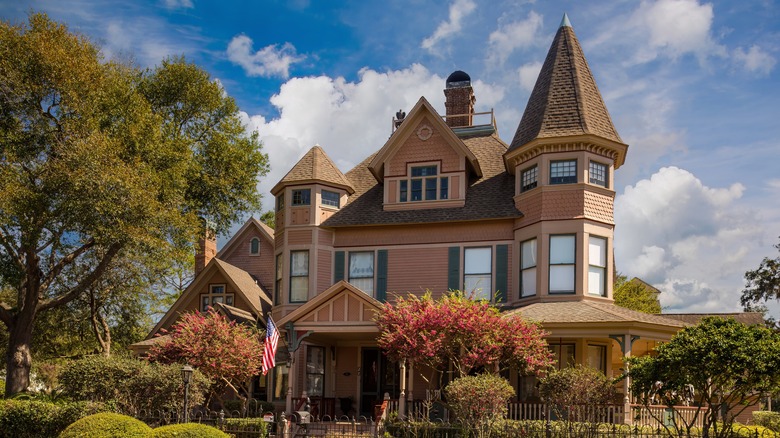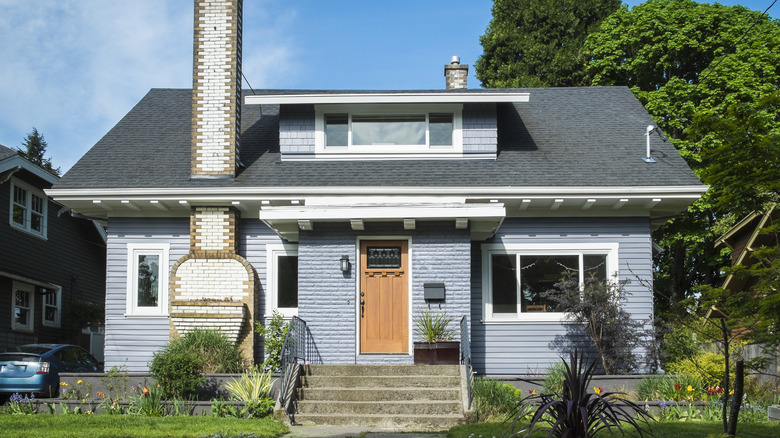What HGTV's Ben Napier Means When He Calls A House A Craftorian
Neighborhoods, particularly older ones, can often be comprised of a charming and eclectic mix of home styles on any given block. This includes gorgeous and stately historic homes and stunning new builds alike, all of which draw on architectural styles from days past while still making additions and changes to fit modern lifestyles. HGTV hosts Erin and Ben Napier recently encountered a gorgeous turn-of-the-century home on "Home Town" that is, all by itself, an interesting blend of two home styles prominent in the early years of its existence. It's a Victorian home with Craftsman-style renovations to its exterior.
In the episode, Ben Napier points out the home's unique blend of influences, saying, "The house was built in 1900 and technically, it would be considered a Victorian home. But just like the house across the street, work has been done. So, [the] exterior leans a little more craftsman and it's kind of a 'craftorian.'"
The Napiers help the family transform the hybrid historic home inside and out, adding unique touches that evoke both styles, including widening interior doorways, creating new wainscotting to replace damaged wood, adding antiques, and replacing a non-working fireplace in a bedroom with a stunning new mantle re-used from another home remodel. Outside, they transform the exterior from a dark blue to a bright white, blending in the original Victorian-style ornate moldings around the windows to form a more subtle contrast with the siding. The result is a liveable and beautiful home that reinforces its original character and influences.
Victorian vs. Craftsman style
Despite the overlapping years of their popularity at the dawn of the century, the juxtaposition of these two styles in a single home may seem an odd one. They are often positioned as two opposing home styles, one growing out of response to the other. Victorian houses, which take their name from the reign of Britain's Queen Victoria, had their heyday in the latter half of the 19th century in both Britain and the U.S. These larger, more bombastic homes often emphasized vertical lines, which were achieved by steep gabled roofs, elements like towers and turrets, and two or three stories of height. The outsides were usually ornate, involving beautiful decorative trim, colorful exteriors, and intricate ironwork and spindles. Many of the finer touches, such as ironwork, moldings, and plate glass windows were manufactured products of the Industrial Revolution, which made them newly accessible and affordable to the middle class.
Craftsman houses, on the other hand, emphasized human craftsmanship over industrial production. The Arts & Crafts movement in Britain, which included famous figures like William Morris and Gustav Stickley, sought an antidote to mass production and consumerism. Stickley, a furniture designer, used his publication "The Craftsman," began in 1901, to spread a number of home patterns that took hold in popularity in the coming decades. Unlike Victorian construction, these homes were found in a variety of sizes and price points but all of them placed a premium on craft and material. As such, they were decidedly more horizontal, with wide porches, exposed beams, and hand-carved millwork throughout.
The charm of the Craftorian
While Craftorian homes are not as common as the two home styles that influence them, and usually the result of renovations over time, these hybrid houses may be perfect if you are looking for a historic home that has a lot of charm and detail but is decidedly less ornate or fussy on its exterior than Victorian-style constructions. Craftsman homes often embrace the natural landscape with neutral and earthy colors, so are less likely to stand out with bright colors and trim popular in the Victorian era. Their lower-slung profiles often make them desirable to homes with more floors. Many more modern and minimalist homeowners prefer a historic feel without the bells and whistles of Victorian homes like turrets, towers, and steeply gabled windows.
Inside, Craftsman rooms tend to be wide open and spacious with exposed beams and hand-hewn woodwork while Victorian homes feature a lot of small, boxy rooms with higher ceilings – a situation of contrasts that Erin and Ben Napier expertly tackle in the episode, by widening the doorway to the kitchen slightly to reflect a wider, more Craftsman-style four-foot wide opening. It's a great solution that still stays in line with these older styles and keeps the load-bearing wall intact, while giving a nod to the more open-concept layout modern homeowners often desire. A successful mix of these two competing styles in interiors often lends itself to a more staid and handcrafted version of Victorian-era construction that revels in the more open and expansive feel of Craftsman homes.



